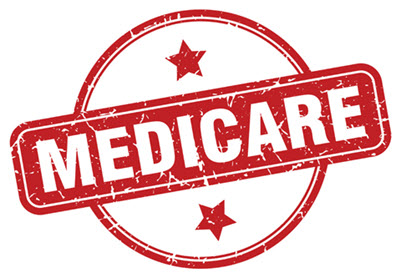Beware Proposed Rule Conversion Factor Decrease for 2023
See how changes impact general surgery. Practices may have hoped that rising inflation and the ongoing COVID impacts on the healthcare system would have nudged the fed to keep pricing stable for 2023 Medicare payments. But that won’t be the case if the Medicare Physician Fee Schedule (MPFS) proposed rule is finalized without changes. “At CMS, we are constantly striving to expand access to high quality, comprehensive health care for people served by the Medicare program,” according to Centers for Medicare & Medicaid Services (CMS) Administrator Chiquita Brooks- LaSure in a statement accompanying the July 7 release of the calendar year (CY) 2023 Medicare Physician Fee Schedule (MPFS) proposed rule. Reality: Medicare providers might need to tighten their belts next year, because the proposed rule includes an overall 4.42 percent decrease in the conversion factor (CF). Industry leaders are already bemoaning the suggested cuts and calling for congressional input. Read on to find out why Medicare is proposing the CF cut and how it may affect you in 2023. Don’t Miss Stakeholder Reaction With the CF decrease expected to hit physicians hard in 2023, the American Medical Association (AMA) is already advocating for legislators to get involved. “It is immediately apparent that the rule not only fails to account for inflation in practice costs and COVID-related challenges to practice sustainability, but also includes a significant and damaging across-the-board reduction in payment rates,” cautions AMA President Jack Resnek Jr., MD, in a release on the proposed rule. “Such a move would create long-term financial instability in the Medicare physician payment system and threaten patient access to Medicare-participating physicians. We will be working with Congress to prevent this harmful outcome.” Follow the Trail to CF Decrease To fully understand what’s going on, you have to look at last year’s changes, which were a byproduct of COVID and congressional input. First: As part of the CY 2022 final rule, CMS reduced the CF roughly from $34.89 to $33.59 as a result of the combination of the mandated annual budget neutrality requirements, which included a $1.30 decrease to the CF, and the expiration of the Consolidated Appropriations Act, 2021 3.75 percent increase. Next: Then last December, Congress pushed through, and President Biden signed, the Protecting Medicare and American Farmers from Sequester Cuts Act into law. The legislation offered Medicare providers a break with a 3 percent increase to the 2022 CF since many were reeling from COVID fallout. Now: CMS proposes to cut the CF by about $1.53 for CY 2023, reducing the rate roughly from $34.61 to $33.08, the MPFS proposed rule suggests. “This conversion factor accounts for the statutorily required update to the conversion factor for CY 2023 of 0 percent, the expiration of the 3 percent increase in PFS payments for CY 2022 as required by the Protecting Medicare and American Farmers From Sequester Cuts Act, and the statutorily required budget neutrality adjustment to account for changes in Relative Value Units,” CMS explains in a fact sheet on the proposals. Remember How the CF Impacts Medicare Pay CMS utilizes a resource-based relative value scale (RBRVS) to determine how much practitioners are to be paid for the services they provide. In that capacity, the MPFS establishes different values for codes depending on the setting/site (facility or nonfacility) in which the provider performs the service or procedure. For some services, the total relative value units (RVUs) for a given procedure are the same in a facility or a nonfacility setting. In other situations, however, the two totals may differ. How it works: The facility and nonfacility total RVUs are the sum of three component RVUs: Physician work RVUs and malpractice expense RVUs are the same, regardless of the setting (facility or nonfacility). Practice expense RVUs may vary by site of service, which accounts for the difference in facility and nonfacility RVU totals for a given code. Medicare fees also vary geographically; thus, each component RVU is multiplied by its own geographic practice cost index (GPCI) for the payment locality in which the service is rendered before the components are summed and multiplied by the dollar conversion factor that translates RVUs into fees. Note Impact for General Surgeons According to CMS’ estimated impact on total allowed charges, the proposed rule indicates that general surgery practices can expect a 1 percent overall reduction in 2023 based on the impact of relative value unit (RVU) changes. That’s on top of the proposed CF reduction. Resource: To view the proposed rule, go to www.govinfo.gov/ content/pkg/FR-2022-07-29/pdf/2022-14562.pdf. Comments: To offer CMS your two cents on the rule and the CF proposals, submit your comments by Sept. 6 at www.regulations.gov/document/CMS-2022-0113-0001.





